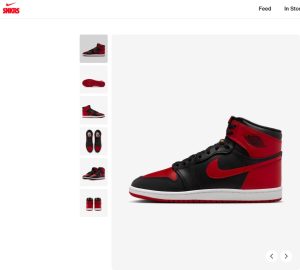Reading: Marketing and Customer Relationships
Customer Relationship Management: A Strategic Imperative
Marketing’s core purpose is to help organizations identify, satisfy, and retain customers. These three pillars lay the foundation for what is now a strategic imperative in modern marketing: customer relationship management (CRM).
CRM is more than just a tool or software platform. It’s a business philosophy rooted in the marketing concept, where the entire organization is aligned around understanding and serving customer needs. Thanks to rapid advances in AI, real-time data analytics, and digital engagement platforms, companies today can create highly personalized experiences and maintain continuous, meaningful relationships with customers across multiple channels.
Platforms like Shopify, Salesforce, HubSpot, and even TikTok offer CRM tools that help companies respond to customer behaviours in real time. Loyalty programs, personalized messaging, user-generated content, and data-driven customer service are now essential components of competitive strategy.
Maximizing Customer Lifetime Value
Central to CRM is the idea of Customer Lifetime Value (CLV), a prediction of the net profit associated with a customer over the duration of their relationship with a brand. High-CLV customers aren’t just valuable because they buy more; they engage more, promote more, and cost less to retain.
| Stages of the Customer Relationship & Key Marketing Activities | |
|---|---|
| Customer Relationship Stage | Key Marketing Activities |
| Stage 1: Meeting and Getting Acquainted |
|
| Stage 2: Providing a Satisfying Experience |
|
| Stage 3: Sustain a Committed Relationship |
|
Another benefit of effective customer relationship management is that it reduces the cost of business and increases profitability. As a rule, winning a new customer’s business takes significantly more time, effort, and marketing resources than it does to renew or expand business with an existing customer.
Customer Relationship As Competitive Advantage
In a global, always-on marketplace, where customers have infinite options, relationships become the reason people stay.

Consider why a customer might choose to buy a limited-edition sneaker drop from Nike instead of a generic brand. It’s not just product quality, it’s the connection: app alerts, stories on TikTok, collaborations with favourite athletes, and the community feel of being a Nike member.
Similarly, Zara’s loyal customers return because of personalized shopping apps, fast in-store pickups, sustainable clothing lines, and helpful, consistent in-store service. These experiences lead to emotional loyalty, where customers choose the brand even when alternatives are cheaper or more convenient.
When Customers Become Your Best Marketing Tool
Today’s marketing landscape gives customers a megaphone. With reviews, ratings, videos, and social media posts, customers have more influence than ever.
Successful companies encourage customers to:
-
Leave Google, Yelp, or Amazon reviews
-
Post about their experiences on TikTok, Instagram, or YouTube
-
Share unboxing moments or tutorials
-
Tag the brand in lifestyle content
Word-of-mouth and peer-generated content are often more persuasive than paid ads, especially for Gen Z and Gen Alpha.
Modern CRM strategies aim to empower customers as co-marketers. They don’t just speak about your brand; they help shape it.

Engagement Marketing: Turning Customers into Brand Participants
Engagement marketing goes one step further. It invites customers to become co-creators in a brand’s journey—generating ideas, producing content, and building community.
You may have seen engagement marketing where fans vote on new product colours (e.g., LEGO Ideas, Nike By You), TikTok users co-creating brand challenges, gamified loyalty apps where customers earn points by participating in campaigns or user-generated content (UGC) contests where brands feature customers in ad campaigns
GoPro Case Study: User-Generated Content as a Marketing Powerhouse
GoPro has redefined modern marketing by turning its customers into creators. Through initiatives like the Million Dollar Challenge and the GoPro Awards, the company has harnessed the power of user-generated content (UGC) to build a global community and drive brand engagement.
Million Dollar Challenge: Crowdsourcing Adventure
In 2024, GoPro’s Million Dollar Challenge invited users worldwide to submit their most exhilarating footage captured with the HERO8 Black and MAX cameras. The campaign received over 42,000 submissions from 170 countries, showcasing a diverse array of adventures—from extreme sports to everyday moments .
The winning clips were compiled into a promotional video that garnered millions of views and won the prestigious Shorty Award for Best User-Generated Content. This initiative not only highlighted the capabilities of GoPro’s products but also fostered a sense of community among users.
Building a Community Through Social Media
GoPro’s marketing strategy heavily relies on social media platforms to amplify UGC. By encouraging users to share their content using hashtags like #GoPro and #GoProAwards, the company has created a continuous stream of authentic content that resonates with audiences.
This approach has led to significant growth in GoPro’s online presence, with the brand amassing over 16 million followers on Instagram and the #GoPro hashtag being used more than 40 million times .
GoPro Awards: Celebrating Creativity
Beyond the Million Dollar Challenge, GoPro’s GoPro Awards program recognizes and rewards users for their creativity. Participants submit their best photos and videos for a chance to win cash prizes, gear, and global exposure. This ongoing initiative keeps the community engaged and continuously provides GoPro with fresh, authentic content for marketing purposes .
Marketing Takeaways
| GoPro’s Success: Lessons for Marketers |
|---|
| Empower Your Audience: Encourage customers to share their experiences, turning them into brand ambassadors. |
| Leverage Social Proof: Authentic user content builds trust and showcases real-world applications of your products. |
| Foster Community Engagement: Recognize and reward user contributions to build a loyal and active community. |
By integrating UGC into its core marketing strategy, GoPro has created a dynamic and engaging brand narrative that continues to inspire and connect with audiences worldwide.
Creation notes: Chat GPT was used to update and shorten text to include current examples and create a table and call-outs.

